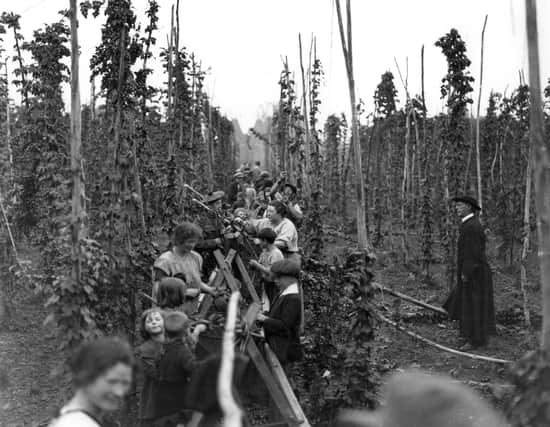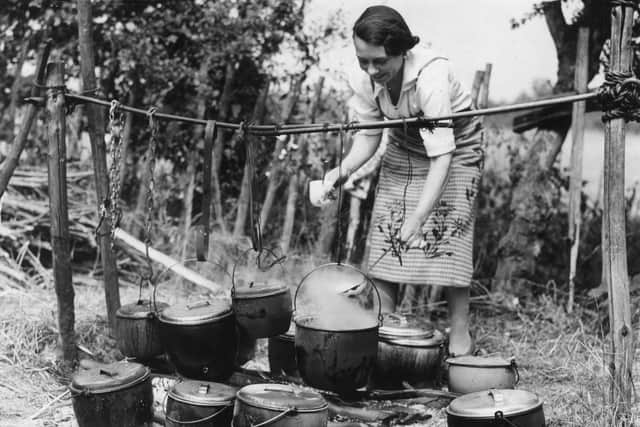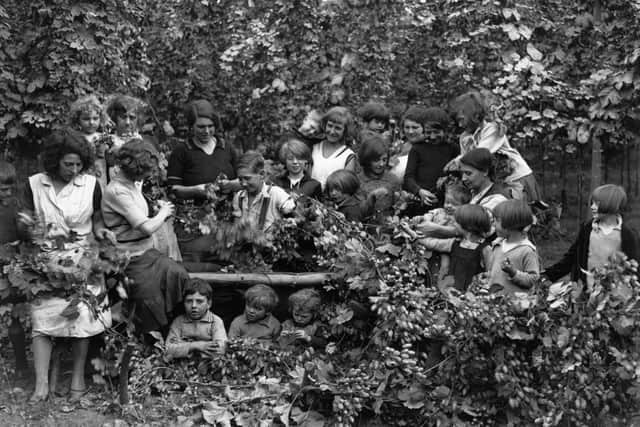Holidays with pay in the Kentish hop gardens


These pictures from the archive recall an almost forgotten chapter of hop pickers in sleeveless blouses and silk stockings, busily stripping vines.
Many are children, for whom both the countryside and the presence of a photographer would have been a novelty.
Advertisement
Hide AdAdvertisement
Hide AdThey didn’t earn much – they had to pay their own way there and back and they might make nine shillings a week if they were lucky – but the job had its compensations in the abundant fresh country air and a hearty picnic at lunchtime.


For many youngsters, who joined the annual trail of 40,000 to Kent in charabancs, covered wagons, London taxis or on the backs of lorries every July in the years before and after the war, the break lasted not just a week but the entire duration of the school holidays.
The picking itself in the pre-mechanised age was back-breaking work, especially for the adults. Each family had a bin – actually a large sack held up by poles – in which to place the hops as they worked their way around their allocated rows, in a regimented order.
When the bin was full, the “tally man” was summoned to scoop the hops into a large measuring basket and a record made, before the process began again until the field was stripped bare.
Advertisement
Hide AdAdvertisement
Hide AdWhen the day was done, the pickers were put up in huts, often with corrugated irons roofs, which were best described as part camp site, part slum. Not only washing but also cooking facilities were shared, with a single cookhouse serving each row of huts.


Support The Yorkshire Post and become a subscriber today.
Your subscription will help us to continue to bring quality news to the people of Yorkshire. In return, you’ll see fewer ads on site, get free access to our app and receive exclusive members-only offers.
So, please – if you can – pay for our work. Just £5 per month is the starting point. If you think that which we are trying to achieve is worth more, you can pay us what you think we are worth. By doing so, you will be investing in something that is becoming increasingly rare. Independent journalism that cares less about right and left and more about right and wrong. Journalism you can trust.
Thank you
James Mitchinson
Comment Guidelines
National World encourages reader discussion on our stories. User feedback, insights and back-and-forth exchanges add a rich layer of context to reporting. Please review our Community Guidelines before commenting.